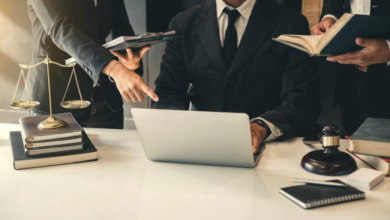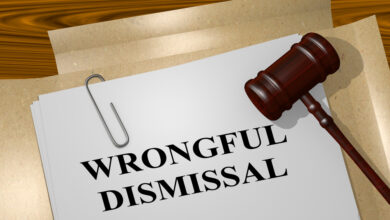The Benefits of Hiring a Local Personal Injury Lawyer in Manhattan Beach

After a personal injury accident, choosing the right attorney can significantly impact the success of your case. While there are many law firms to choose from, hiring a local personal injury lawyer in Manhattan Beach offers distinct advantages. These attorneys bring regional knowledge, community connections, and personalized service that can make all the difference in navigating the complexities of personal injury law.
This article explores the unique benefits of working with a local attorney and why Manhattan Beach residents should consider this approach for their personal injury claims.
A Deep Understanding of Local Laws
Every state has its own set of personal injury laws, but specific nuances within regions can vary even further. A local attorney in Manhattan Beach understands these intricacies, allowing them to handle your case more effectively.
Advantages of Local Legal Expertise:
- Knowledge of California Statutes: They are well-versed in state-specific rules, such as California’s pure comparative negligence law and statute of limitations for personal injury claims.
- Familiarity with Local Ordinances: Attorneys who practice in Manhattan Beach often have a better understanding of local traffic laws, zoning codes, and safety regulations that may play a role in your case.
This local expertise ensures your claim is built on a solid legal foundation.
Familiarity with Regional Courts
Navigating the court system can be daunting, especially for those unfamiliar with its procedures. A local personal injury lawyer has experience working within the Manhattan Beach area’s legal framework and knows how to operate efficiently.
Benefits of Regional Court Knowledge:
- Established Relationships: Local attorneys often have working relationships with judges, court staff, and opposing counsel, which can lead to smoother proceedings.
- Understanding Court Procedures: They know the specific filing requirements, deadlines, and expectations of nearby courts.
- Predicting Outcomes: Familiarity with local precedents and rulings allows attorneys to anticipate how similar cases have been decided.
This insider knowledge can help streamline your case and increase the likelihood of a favorable outcome.
Accessibility and Personalized Service
One of the most significant advantages of hiring a local lawyer is their accessibility and ability to provide personalized service.
Why Accessibility Matters:
- In-Person Consultations: Unlike attorneys located far away, local lawyers can meet you face-to-face, making communication more efficient.
- Easier Communication: Proximity allows for quicker responses to questions and concerns, reducing the stress of waiting for updates.
- A Sense of Community: Local attorneys often share a vested interest in helping members of their community succeed, fostering trust and understanding.
This hands-on approach ensures your lawyer fully understands your needs and tailors their strategy accordingly.
Familiarity with the Local Community
A local attorney isn’t just knowledgeable about the law—they’re also deeply familiar with the Manhattan Beach community and its unique characteristics.
How Community Insight Helps Your Case:
- Accident Trends: Local lawyers understand common causes of accidents in the area, such as specific dangerous intersections or poorly maintained roads.
- Insurance Practices: They are familiar with the tactics used by insurers that operate in the region and know how to counter them effectively.
- Reputation with Local Professionals: Lawyers who work in Manhattan Beach often have strong relationships with local experts, such as medical professionals, accident reconstructionists, and investigators, who can support your case.
This community knowledge helps attorneys craft a compelling narrative that resonates with juries and judges.
Cost-Effectiveness and Efficiency
Working with a local lawyer can also save time and money compared to hiring an attorney located outside of the area.
Why Local Representation Is More Efficient:
- Lower Travel Costs: A local attorney eliminates the need for travel expenses or delays associated with handling cases from a distance.
- Faster Case Progression: Familiarity with local courts and procedures helps avoid unnecessary delays.
- Streamlined Investigations: Proximity allows lawyers to visit accident scenes, interview witnesses, and gather evidence more quickly.
By choosing a local lawyer, you benefit from a more efficient and cost-effective process.
Handling Local Insurance Companies
Insurance companies play a pivotal role in personal injury cases, and each one has its own strategies for minimizing payouts. Local attorneys have firsthand experience dealing with these companies and their adjusters.
How Local Lawyers Handle Insurance:
- Knowledge of Specific Insurers: They understand the common tactics used by regional insurance companies and know how to counter them effectively.
- Negotiation Expertise: Familiarity with local insurers allows attorneys to negotiate settlements tailored to regional standards.
- Aggressive Advocacy: Local attorneys ensure you aren’t pressured into accepting a lowball offer by leveraging their experience with these companies.
This familiarity ensures you’re treated fairly during the claims process.
Building Trust Through Community Involvement
Local attorneys often have a deep connection to their communities, participating in events, supporting local causes, and building a reputation for service and excellence.
Why This Matters:
- Strong Ethical Standards: Attorneys who are part of the community have a reputation to uphold, motivating them to provide exceptional service.
- Word-of-Mouth Referrals: Local clients who’ve had positive experiences often recommend these attorneys, reflecting their reliability and dedication.
- A Commitment to Justice: Lawyers invested in their community want to see local residents succeed, making them more committed to achieving favorable outcomes.
This trust fosters a collaborative relationship, helping you feel confident and supported throughout the legal process.
Examples of Cases Benefiting from Local Expertise
Certain types of personal injury cases benefit significantly from the insights of a local attorney:
1. Car Accidents
Manhattan Beach has specific traffic hotspots where accidents frequently occur. A local lawyer knows these areas and can use this knowledge to argue liability effectively.
2. Pedestrian Accidents
With a vibrant pedestrian community, local lawyers understand the challenges of crosswalk safety and road-sharing laws unique to the area.
3. Premises Liability Cases
Slip-and-fall accidents in Manhattan Beach businesses often require knowledge of local safety codes and maintenance practices.
By leveraging their local experience, attorneys can provide tailored strategies that align with the unique challenges of each case.
The Role of Gammill Law
For Manhattan Beach residents, hiring a local legal team like Gammill Law ensures your case receives personalized attention and the benefit of regional expertise. Their familiarity with local laws, courts, and community dynamics makes them a trusted choice for navigating personal injury claims.
From handling negotiations with insurers to advocating in court, their attorneys are equipped to address every aspect of your case while keeping your unique needs at the forefront.
Moving Forward with Confidence
Choosing a local personal injury lawyer in Manhattan Beach isn’t just about convenience—it’s about ensuring your case is handled by someone who truly understands your community and its legal landscape. From accessibility and personalized service to court familiarity and community connections, local representation offers advantages that can make a real difference in your case’s outcome.
For those seeking justice and fair compensation, partnering with an experienced firm like Gammill Law is a step toward recovery and resolution. Don’t settle for less when it comes to your rights—choose local expertise to guide you through the complexities of personal injury law.



